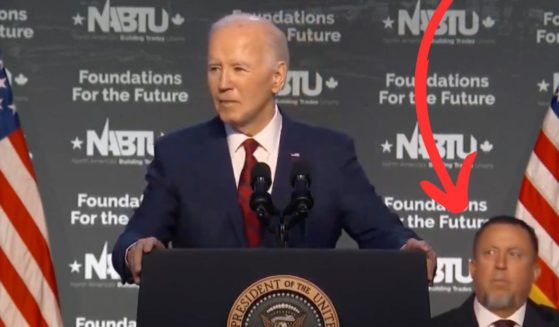Op-Ed: Don't Fall for Biden's Talking Points About Inflation - Here's Where We Really Are
The Biden administration is making much of the claim that inflation was down to 3.0 percent in June. While some might celebrate this, let’s look at where we really are two and a half years into this administration.
Inflation numbers are given year-over-year. That means the goods we could buy last June for a dollar now cost us $1.03. Typically, 3 percent inflation is considered healthy economic growth.
But last June the inflation rate was 9.1 percent, and the year before it was 5.4 percent. So prices increased almost twice as much as what is considered healthy from 2020 to 2021, then three times as much from 2021 to 2022, and now we’ve finally settled down.
But is bad, bad, normal something to celebrate?
Those numbers come from the U.S. Inflation Calculator, which gets its numbers from the Bureau of Labor and Statistics. Let us look at what it took in June 2023 to buy what a dollar bought in 2020, the year before Biden ascended to the Oval Office.
The goods and services you could buy with $1 in June 2020 now cost more than $1.18. That is all OK if wages kept pace, but did they?
According to the Federal Reserve Bank of Atlanta’s wage growth tracker, they did not.
The three-month moving average of the growth in the U.S. median wage was 3.2 percent, 6.7 percent and 5.4 percent in June 2021, 2022 and 2023, respectively. That means that on average, for every dollar a person earned in June 2020, he or she earned $1.16 in June 2023.
So at this point under the Biden regime, most Americans are poorer, in real dollars, than they were in June 2020.
How does that compare to the same time period in Donald Trump’s presidency?
Inflation numbers for June 2017, 2018 and 2019 were 1.6 percent, 2.9 percent and 1.6 percent, respectively. Median wage growth for the same time period was 3.2 percent, 3.2 percent and 3.9 percent.
Putting those numbers together, we see that in June 2019 it took $1.06 to purchase what a person could buy with $1 in June 2016, the year before Trump took office. Real wages grew more than 10 percent in the same period. On average, for every dollar a person earned in June 2016, that person was earning $1.10 in June 2019. That was growth in purchasing power for the average American.
Practically every sector of the U.S. economy has seen prices rise dramatically under Biden, with wages failing to keep up. Prices rose modestly under Trump at the same stage in his presidency, and wages grew faster than prices.
Do not fall for Biden’s talking points. The typical American is not faring well under Uncle Joe.
While the establishment media may not tell you this tale, they are at least starting to call the propagandist in chief on some of his untruths.
The views expressed in this opinion article are those of their author and are not necessarily either shared or endorsed by the owners of this website. If you are interested in contributing an Op-Ed to The Western Journal, you can learn about our submission guidelines and process here.
Truth and Accuracy
We are committed to truth and accuracy in all of our journalism. Read our editorial standards.












